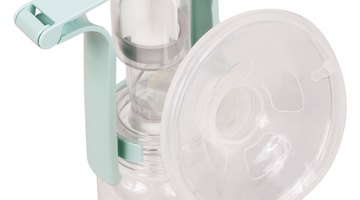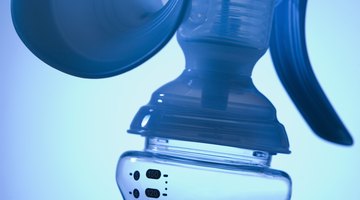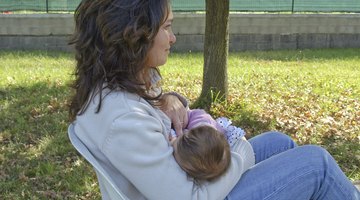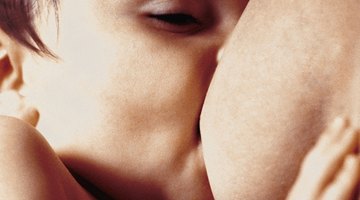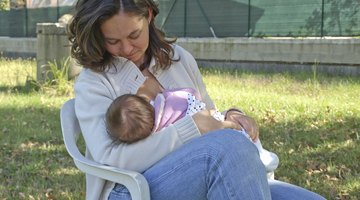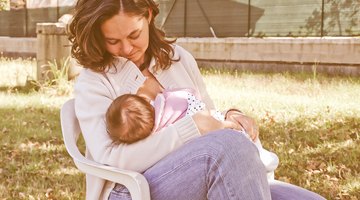Causes of Shooting Breast Pain When Breastfeeding
Breastfeeding can be one of the richest experiences of new motherhood, except when it becomes a pain -- literally. Breast pain while nursing is relatively common, especially during the first few days. It's generally not serious or long-lasting.
However, pain that continues or is accompanied by other symptoms can indicate an infection that needs prompt treatment. Talk with your doctor or lactation consultant if you have breast pain when nursing your baby.
Experiencing Engorgement
It takes approximately 48 hours after birth for your breasts to begin producing milk.
When your milk first comes in, you might experience a sometimes painful condition called engorgement. It occurs because you're making more breast milk than your baby takes out. This leads to overfilled milk ducts that can cause painful, throbbing or tender breasts.
Frequent feeding from both breasts and checking your nursing position to make sure your baby is latching on properly can help relieve the pain of engorgement. Using warm cloths on your breasts and over-the-counter pain relievers can help -- but check with your doctor before taking any medication.
Let-Down Discomfort
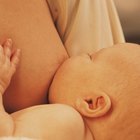
Warm Breasts & Tender Nipples While Breastfeeding
Learn More
When your baby begins to suck, milk flows through the ducts and out of the nipple.
The milk-ejection, or let-down, reflex can sometimes occur if you hear a baby cry -- even if it's not yours. Just thinking about your baby can also trigger the let-down reflex.
Milk ejection distends the milk ducts, sometimes causing a shooting pain when you first begin to nurse. It occurs most often in first-time moms. Manually expressing the first forceful sprays of milk before you start feeding your baby can help prevent shooting pains while nursing.
Yeast Infections
Candida is a type of fungus often found on skin. A study published in the April/June 2003 issue of "Pesquisa Odontológica Brasileira" found that 34 percent of breastfeeding women and 17 percent of nonlactating women carried the fungus on their breasts.
Babies can also develop an oral yeast infection, commonly called thrush, and pass it on to your nipples.
Candida infection can cause shooting breast pain and sore, tender, swollen or dry nipples.
You might notice also white patches or reddened, raw-looking patches in your baby's mouth. Seek treatment for both of you as soon as you suspect a Candida infection.
Recognizing Mastitis
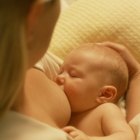
Lump in My Areola When Breastfeeding
Learn More
Mastitis is an infection of the breast tissue, which can cause shooting pain while breastfeeding. Approximately 10 percent of American breastfeeding women develop mastitis, according to a September 2008 "American Family Physician" article. The breast typically appears reddened and you may also experience flulike symptoms, including fever and a general feeling of being sick.
It's important to keep breastfeeding with the affected breast if you develop mastitis because not emptying the breast can make the condition worse. Your doctor may prescribe antibiotics to clear up the infection.
When to Seek Medical Attention
Seek treatment whenever you have shooting breast pain while nursing. Pain can discourage you from nursing your baby, and in most cases simple treatments can prevent or alleviate breast pain.
Related Articles
- American Family Physician: Management of Mastitis in Breastfeeding Women
- Cochrane Database Systematic Review 2010: Treatments for Breast Engorgement During Lactation
- Breastfeeding and Human Lactation; Karen Wambach and Jan Riordan
- The Permanente Journal: Candida Mastitis: A Case Report
- Pesquisa Odontológica Brasileira: Candida spp. Occurrence in Oral Cavities of Breastfeeding Infants and in Their Mothers' Mouths and Breasts


